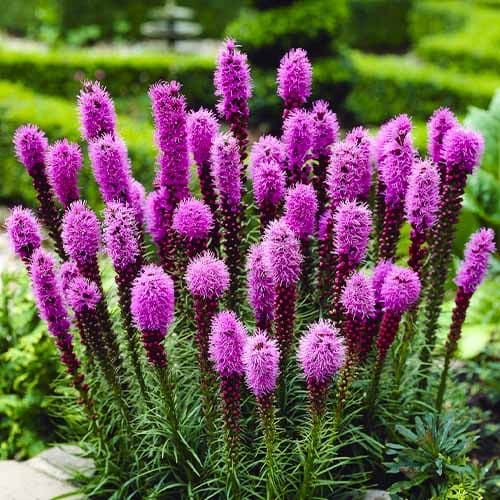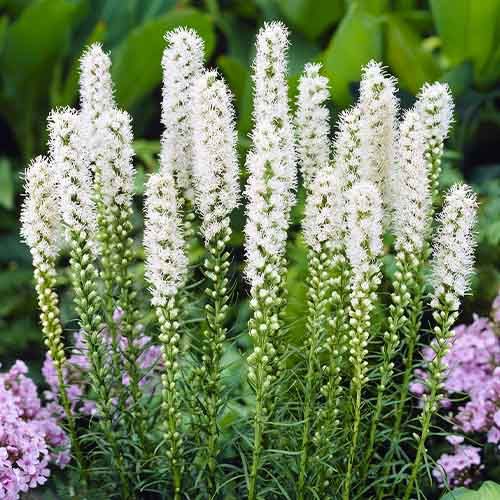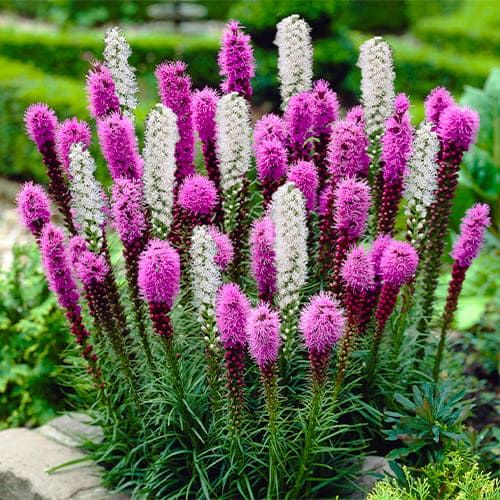Liatris Spicata (Blazing Star)
Liatris Spicata (Blazing Star)
Last Reviews
Discover the beauty of Liatris Spicata Bulbs
Liatris Spicata bulbs, commonly known as Blazing Star or Gayfeather, are a delightful addition to any garden landscape. Native to North America, these summer-flowering bulbs are prized for their tall spikes of purple, pink, or white flowers that bloom in late summer to early fall. With their striking appearance and ability to attract butterflies and bees, Liatris Spicata bulbs are a favorite among gardeners looking to add color and interest to their outdoor spaces.
How to Choose the Best Liatris Spicata Plants for Sale
When selecting Liatris Spicata plants for your garden, consider factors such as bloom color, plant height, and bloom time to ensure they complement your existing landscape. Look for healthy plants with sturdy stems and vibrant foliage, as these are indicators of vigor and vitality. Additionally, purchasing from reputable nurseries or online suppliers can help ensure the quality and authenticity of the plants.
Types and Varieties of Liatris Spicata
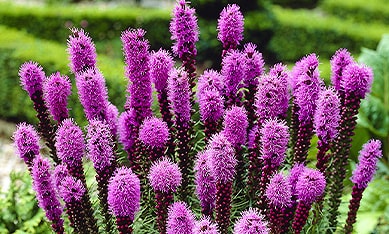
Liatris Spicata bulbs for sale come in several types and varieties, each offering its own unique characteristics and growing requirements. Some popular varieties include:
- Liatris (spicata): The classic Liatris Spicata variety features tall spikes of purple flowers that add vertical interest to any garden landscape. This variety is known for its resilience and ability to attract pollinators such as butterflies and bees.
- Liatris (spicata) Alba: Liatris Spicata Alba, also known as White Blazing Star, produces elegant spikes of pure white flowers. This variety offers a striking contrast against its dark green foliage and adds a touch of sophistication to garden borders and flower beds.
- Liatris Purple and White Collection: This collection includes a mix of Liatris Spicata varieties with purple and white flowers. The combination of colors creates a stunning display in the garden, providing a harmonious blend of hues that attracts attention and adds visual interest.
When choosing Liatris Spicata bulbs for your garden, consider factors such as bloom color, plant height, and bloom time to ensure a harmonious and visually appealing display.
Growing Liatris Spicata: Planting and Care
To grow Liatris Spicata successfully, start by planting your Dutch bulbs in well-drained soil and a sunny location. Ensure the bulbs are planted at the correct depth, with the pointed end facing upwards. Water regularly, keeping the soil evenly moist but not waterlogged, and fertilize during the growing season to promote healthy growth and abundant blooms. Monitor for pests and diseases, and take appropriate measures to protect your plants.
Preparing the Soil for Liatris Spicata Bulbs
Before planting Liatris Spicata bulbs, it's essential to prepare the soil to provide optimal growing conditions. These Netherlands bulbs thrive in well-drained soil with a slightly acidic to neutral pH. Incorporating organic matter, such as compost or aged manure, can improve soil fertility and structure, ensuring healthy bulb development.
Planting Liatris Spicata Bulbs
Plant Liatris Spicata bulbs in the spring or fall, several weeks before the first frost date in your area. Choose a sunny location with well-drained soil. Dig a hole that is twice as deep as the bulb's height and place the bulb in the hole with the pointed end facing upwards. Space bulbs several inches apart to allow for proper airflow and room for growth. Water thoroughly after planting to settle the soil and encourage root establishment.
Caring for Your Liatris Spicata
Once planted, Liatris Spicata bulbs require minimal care to thrive and flourish. Here are some tips:
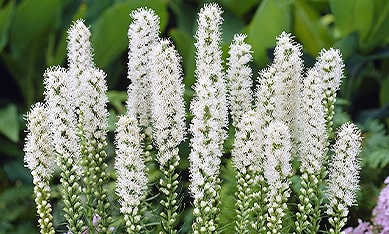
1. Sunlight: Plant in a location that receives full sunlight for at least 6-8 hours a day to ensure robust growth and abundant flowering.
2. Well-Drained Soil: Ensure the soil is well-drained and sandy-loamy, as liatris spicata prefers slightly acidic to neutral soil conditions.
3. Watering: Water deeply but infrequently, allowing the soil to dry out slightly between waterings. Avoid overwatering, as liatris spicata is susceptible to root rot.
4. Fertilization: Apply a balanced fertilizer in early spring before new growth emerges to provide essential nutrients for healthy foliage and flowering.
5. Mulching: Apply a layer of organic mulch around the base of the plants to retain soil moisture, suppress weed growth, and regulate soil temperature.
Buy Liatris Spicata from Holland
Elevate your garden with premium bulbs from Holland. Buy Liatris Spicata bulbs today! Our online store offers a wide selection of high-quality bulbs, ensuring you find the perfect addition to your garden.
Don't miss out on the opportunity to add a touch of elegance and charm to your outdoor space with our Dutch bulbs, sourced directly from the Netherlands. Order Liatris Spicata bulbs now and experience the joy of growing these exquisite flowers in your own garden.











